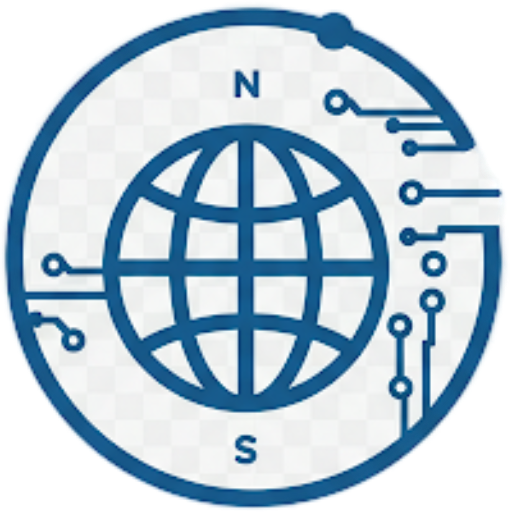Artificial intelligence has already reshaped countless aspects of our world. We’ve witnessed the meteoric rise of Large Language Models (LLMs) like ChatGPT and Gemini, and the creative explosion fueled by Generative AI tools for text, images, and code. As of April 2025, AI is no longer just a buzzword; it’s a fundamental technology driving innovation.
But the AI revolution is far from over. Development is accelerating at an incredible pace. So, what lies beyond the current state-of-the-art? Which AI technologies should we keep an eye on in the next few years (say, 2026-2030)? Here are some key areas poised for significant growth and impact:
1. Generative AI Gets Agentic & Multimodal
If today’s generative AI is impressive, tomorrow’s will be transformative. Expect AI to move beyond handling single data types (text or image or audio) towards true Multimodal AI. These systems will seamlessly integrate and reason across text, images, video, audio, code, and potentially other data types, leading to richer interactions and more sophisticated outputs. Imagine AI assistants that can understand a complex process explained via diagrams, voice, and text simultaneously.
Coupled with this is the rise of Agentic AI. AI systems will evolve from tools that respond to prompts into more autonomous agents capable of planning, reasoning, and executing multi-step tasks with limited human oversight. Think AI “co-workers” or “co-scientists” that can proactively manage projects, conduct research, or automate complex workflows.
2. Explainable AI (XAI) Takes Center Stage
As AI models become more powerful and are deployed in critical sectors like healthcare, finance, and autonomous systems, understanding how they arrive at decisions becomes paramount. Explainable AI (XAI) focuses on making these complex “black box” models more transparent and interpretable. This isn’t just a technical challenge; it’s crucial for building trust, ensuring fairness, debugging models, meeting regulatory compliance (like the EU AI Act), and allowing humans to confidently collaborate with AI systems. Expect significant advancements in techniques and platforms designed to illuminate AI’s decision-making processes.
3. AI as a Catalyst for Scientific Breakthroughs
Science may be one of AI’s most profound applications. Researchers are increasingly using AI as a powerful tool to accelerate discovery across numerous fields. We’re already seeing AI models like Google’s AI co-scientist and Microsoft’s MatterGen being used to:
- Discover new materials with desired properties (e.g., for batteries, superconductors).
- Accelerate drug discovery and repurposing.
- Analyze complex biological data (genomics, proteomics).
- Improve medical diagnostics by interpreting images and data faster and more accurately.
- Model complex systems like climate change. In the coming years, expect AI to become an indispensable partner in the scientific method, helping researchers generate hypotheses, design experiments, analyze data, and ultimately push the boundaries of human knowledge faster than ever before.
4. Embodied AI: Intelligence Meets the Physical World
AI is stepping out of the digital realm and into physical bodies. Embodied AI refers to intelligent systems (robots, drones, self-driving cars) that learn and operate by directly interacting with the physical world through sensors and actuators. Unlike AI trained purely on datasets, embodied AI learns through experience, trial-and-error, and adapting to the unpredictability of real-world environments. Key advancements to watch include:
- More sophisticated robot learning through simulation and reinforcement learning.
- Advancements in soft robotics allowing for safer human-robot interaction.
- Improved computer vision and multimodal sensing for environmental understanding.
- Better coordination in multi-agent robotic systems.
5. Edge AI: Bringing Intelligence Closer
While massive AI models often run in the cloud, there’s a strong push towards Edge AI – running AI computations directly on local devices like smartphones, cars, industrial sensors, and wearables. Why? Edge AI offers lower latency (faster response times), improved privacy and security (sensitive data doesn’t always need to leave the device), reduced reliance on constant connectivity, and lower bandwidth usage. Driven by the growth of IoT, 5G networks, and the demand for real-time processing, the Edge AI market is projected to expand rapidly, enabling smarter devices across countless applications, from manufacturing automation to autonomous vehicles and personalized consumer electronics.
6. Neuro-Symbolic AI: The Best of Both Worlds?
This emerging field aims to bridge the gap between two major AI paradigms: the pattern-recognition prowess of neural networks (deep learning) and the logical reasoning capabilities of symbolic AI (rule-based systems). Neuro-Symbolic AI seeks to create hybrid systems that can learn from vast amounts of data and reason using explicit knowledge and logic, potentially leading to AI that is more robust, interpretable, adaptable, and closer to human-like common sense. While still an active area of research and debate, it holds promise for tackling complex problems requiring both data-driven learning and structured reasoning.
Overarching Themes: Ethics, Governance & Sustainability
Alongside these specific technologies, broader trends will continue to shape AI’s future. The critical importance of AI ethics, fairness, bias mitigation, and robust AI governance frameworks will only intensify as AI becomes more capable and integrated into society. Furthermore, the environmental impact of training large models is driving research into more energy-efficient AI techniques and the use of AI itself to optimize energy consumption and tackle sustainability challenges (Green AI).
The next few years promise an incredible acceleration in AI capabilities. These technologies hold immense potential to solve major challenges, augment human potential, and reshape industries. Staying informed about these developments will be key to navigating the exciting, complex future of artificial intelligence.


